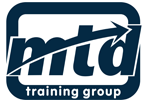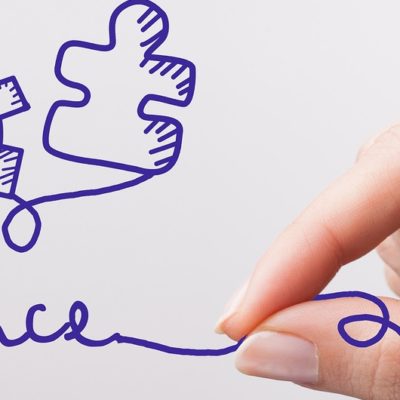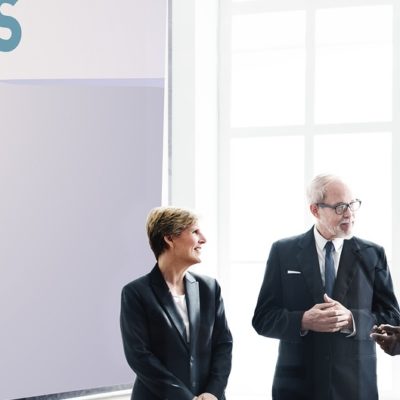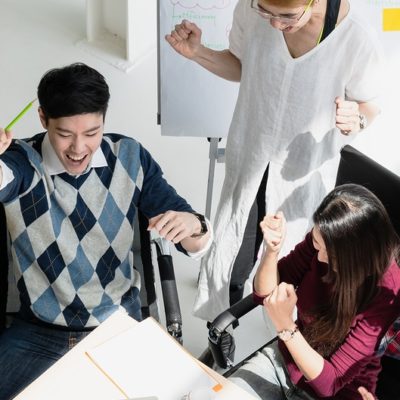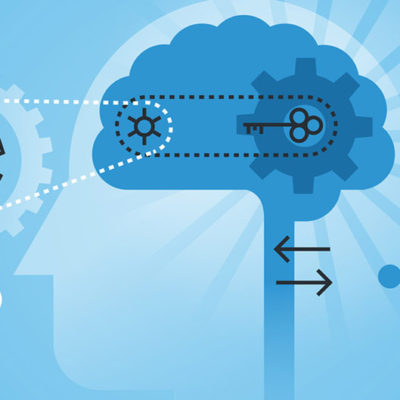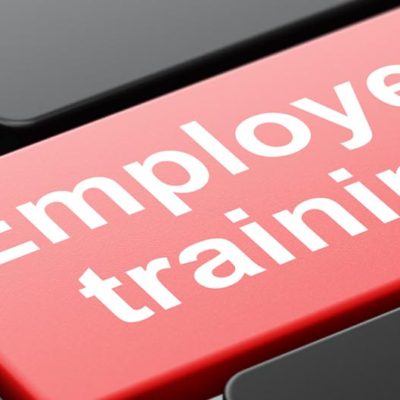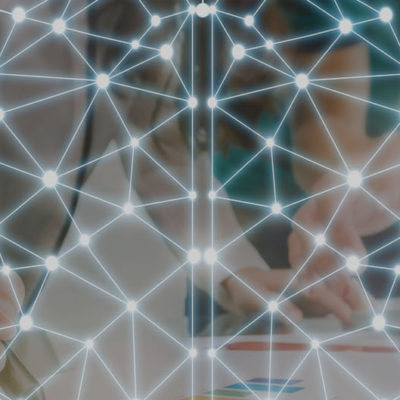How learning can be improved, consolidated, utilised and applied in the real working life is regarded as the epitome of training and development, as our return on the investment made in training needs to be measured and applied so we can justify our time and effort.
To increase and develop learning opportunities sends the right message to delegates and all team members who wish to enhance their skillsets. The big question is –
What are the right ways to set up our learning interactions so that the messages are embedded into the long-term memory?
You don’t want delegates to just enjoy any training programmes they attend. That would only work at Kirkpatrick’s Level One analysis. No, you want your attendees to enjoy the learning, identify the important messages, consolidate the learning, retrieve the ideas and apply them in their working environments.
In order for us to be aware of the best way to embed learning, we need to be aware of how we learn and memorise information. When we do this, we can arrange learning and development ideas to match the way we learn and retrieve information.
Memory processes go through a series of stages that build memory formation. Remembering stuff is related to the ability we have to encode, store or consolidate that information and then retrieve it.
Memory expert Luke Mastin identifies the process through a series of steps in this order:
Stimuli
Encoding
Consolidation
Long-term potential
Storage
Reconstruction
Recall/Retrieval
We’ll look at three of these stages and how we can apply them in our L&D initiatives; Encoding, Consolidation and Retrieval (ECR).
In order for learning to be applied and its value to be displayed in the job we do, we first Encode the material.
This allows the information to be converted into a construct that can be kept safely in the brain. We first need to pay attention to the material, causing neurons to fire more frequently, making any experience more intense. That intensity increases the probability of an event being laid down and encoded as a memory.
If the learning event also is accompanied by emotional attention (like having fun), the memory is processed on a journey where the amygdala in the brain determines the actual sensations associated with the learning experience.
The sensory experiences we enjoy on a training programme can then be combined in the hippocampus as one, determined single experience. The hippocampus analyses the input and decides if it is worthy enough to be committed to long-term memory. In this type of memory, the new learning is compared to already existing knowledge and is associated with them to reinforce the ideas learned.
Different types of encoding;
Acoustic, which is the processing of sounds words and suchlike
Visual, which relates to images and visual sensory information
Tactile, which refers to how something feels to us
Semantic, which determines the meaning that a particular type of learning gives us
Each one of these build on each other. As memory is largely associative in its nature (meaning it is more easily remembered if it is combined, connected and linked with existing knowledge and information) the more personally meaningful the new information is, the more likely it is to be consolidated into the memory banks.
What can we do to ensure information has the best possible chance to be encoded in our learning programmes?
- Look for different ways to introduce learning initiatives
- Visual stimulus to drive the visual encoding muscles
- Auditory stimuli to ensure any phonological loops are embedded for easier retrieval later
- Kinaesthetic stimuli to encourage the somatosensory cortex’s neurons to react to tactile inputs
- Semantic stimuli that refers back to previous learnings and show the interconnectedness of the new stimuli to what is already known
- Introduce new learning initiatives that delegates introduce themselves, like poems, songs, rap verses, mnemonics to stimulate new ideas and presentations that require the learnings to be trained to others
- ‘Little and often’ should be the main motto when consolidating learning. Divide learning sessions up into learning blocks and take short breaks after each one.
All of the above should allow ideas to be encoded into the memory.
This then allows for what is known as Consolidation, the second part of the ECR process.
Consolidation, or amalgamation and association, is best achieved when the neurons used to experience the initial learning are connected to other neurons on a regular basis. The adage ‘use it or lose it’ is a good way to think of the way we lay down a memory.
Once an experience is noted in the brain, the synaptic connections between neurons are strengthened in a process called ‘potentiation’. The synapse (connections between neurons) are strengthened as increasing numbers of signals are transmitted between a large number of neurons. This causes the journey electrical impulses must take to be easier to make, similar to driving on a fast freeway rather than a country lane.
The brain reorganises itself in response to any new experiences it may encounter, and can increase the strength of the connections between neurons. This is now known as synaptic plasticity and can be improved with use and application.

Image from: PSY Blog
So, for learning to be consolidated into our long-term memory, we need to repeat ideas in different ways. One way to do this is for learners to write their own test questions about materials and ask themselves about the application of any learning they have had.
The simple repetition of information or the making of notes in the margins of materials has now been discredited as a way of embedding information (Erickson et al, 2012). The material needs to be seen in different lights, with learning committed to memory in ways that differ from simply regurgitating information written down.
There has to be assimilation through means that will test the delegate, maybe seeing how the application can be rolled out in various ways. Testing themselves, asking others to test them and reviewing information over a period of time tends to build the synaptic connections and help towards consolidation of learned material.
Of course, it’s of no point that we can consolidate or build up learning if we are unable to retrieve that information.
What has to happen for this learning to be recalled at the right time?
This is called Retrieval.
Firstly, memories are not stored in areas of the brain like in filing cabinets or books in a library. Memories are actually made up of the same connections made when the actual event was laid down in our brains. You could think of them as you going on the same journey you had when you first had the learning experience.
Retrieval involves the reconstructing of actual information that already exists in the memory banks. This presumes that the person has learned the ideas in the first place and has consolidated it down in their brain effectively enough for it to be recalled.
It involves the firing of all the neurons and synapses that were involved in the laying down of the original memory. But are some memories prone to being recalled better than others?
Yes, and this can have a profound effect on our L&D processes with our learners.
What is known as ‘Shallow Processing’ leads to a relatively fragile recall operation, susceptible to rapid decay in recall. This form of processing is often related to things we have seen, heard or written down.
Thus, the simple dissemination of material in learning situations, like showing PowerPoint slides and asking people to read material in workbooks, is unlikely to act as a direct embedding of the ideas discussed.
‘Deep Processing’ on the other hand, results in a more durable memory trace. How do we encode information so that it is embedded and consolidated enough to allow for recall?
Deep processing is best applied through semantic learning and its attachment to meaning.
Thus, the best way to achieve high levels of recall of materials is to:
- Delve deep into people’s experiences and concepts that relate to the new material being learned
- Refer back to already-gained information that can be compared to new ideas
- Relate new learning to facts learned over a lifetime
- Show how new learning relates to the role(s) the person is playing in their work life
- Adapt the learning to enhance the role the person plays, making it personal and applicable to them
- Create meanings in your training so that the new ideas discussed can be embedded into their minds and deeply consolidated, allowing it to be easier to retrieve afterwards
When we are aware of the ECR process, we can quickly see that the best way to embed learning ideas into our delegates’ minds is to ensure the compatibility between the new ideas and the already-known information is clearly defined.
Then, the learning methodology has to be correct for the learning styles of the individuals involved, to allow each person to consolidate or store the new ideas in their mind.

Image from: Elcom
Finally, the best way for learning to be retrieved and recalled is for the material to be associated with what the person does in the real world, allowing for semantic and meaningful recall.
For real learning to be really effective, then, we need to help people learn in the best way possible to retrieve information.

Sean McPheat | 
CEO The MTD Training Group
